By Dan Weisz
A month ago I sent a photo email out on Lesser Nighthawks with many photos of the birds in flight. These birds are common sights in the evenings in the Foothills and in southern Arizona. They, like many other birds, are summer visitors and come up north to this area to breed. Finding Lesser Nighthawks during the day is near impossible as they roost on the desert floor. And female Lesser Nighthawks do not build nests. They lay eggs directly on the ground relying on the mothers’ camouflaged bodies to keep the eggs hidden. Recently, I learned that a friend of a friend had a nesting Lesser Nighthawk just beyond their back wall.
I observed her one day and then a few days later heard that the one egg had hatched. I quickly returned!
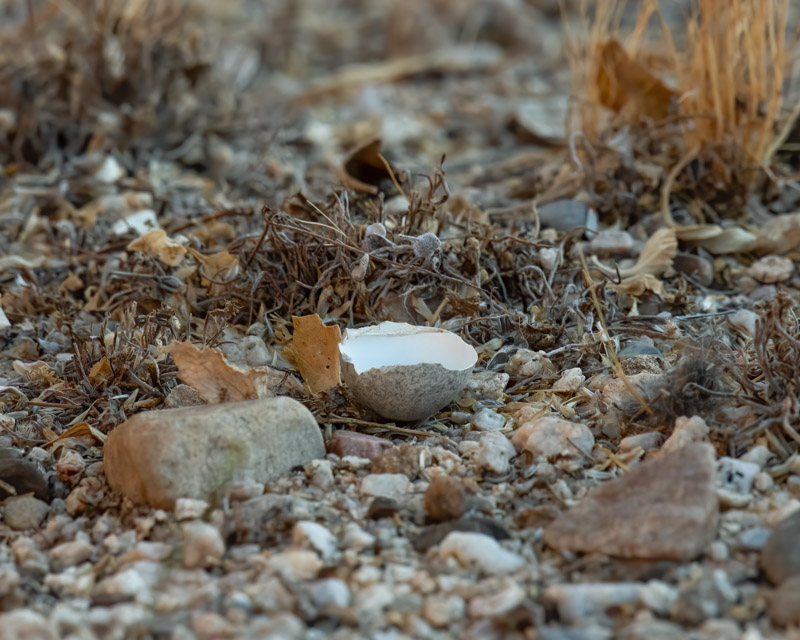
And after finding the mother Lesser Nighthawk, the chick soon emerged. These photos were taken on the third or fourth day after hatching. You can see the little chick covered with light brown down with tiny wings. One other feature to note is that white dot on the bill of the chick. That is what is called its “egg tooth”. Chicks need a something to help them crack open the egg shell from the inside, and that hard white “tooth” does the job. Eventually, that egg tooth disappears.
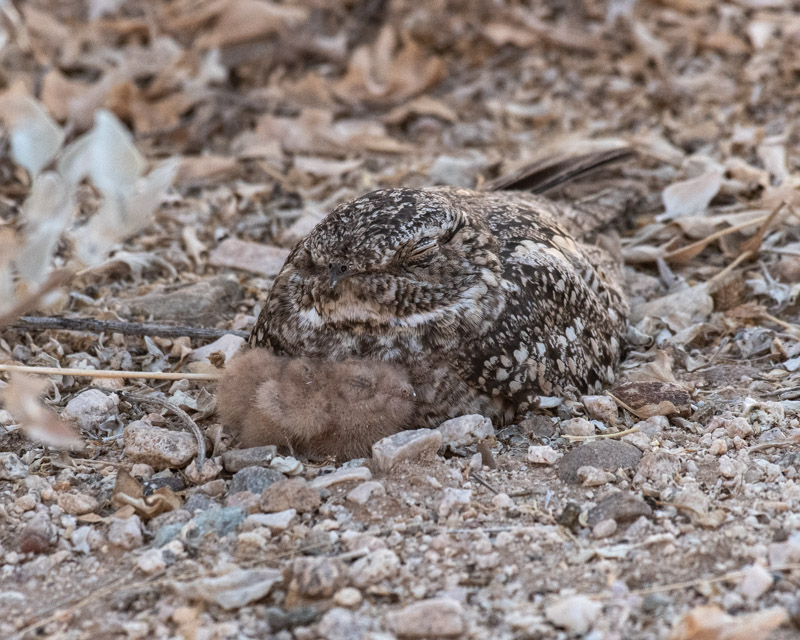
Much of the time the chick would scrunch down deep under its mother. You can see a tiny bit of the tan down underneath the mother in this shot.
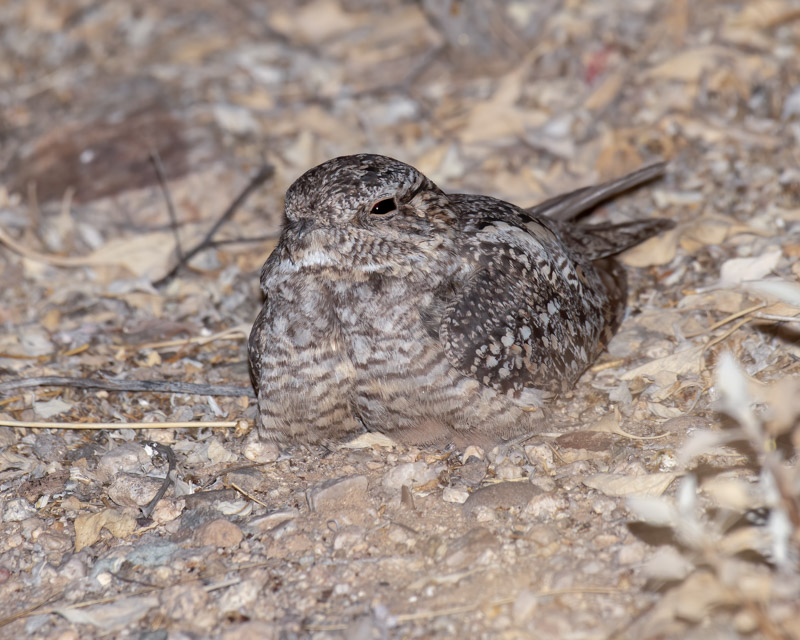
And then the chick would reappear. These photos were taken just after sunset. The mother bird was beginning to awake as it got darker.
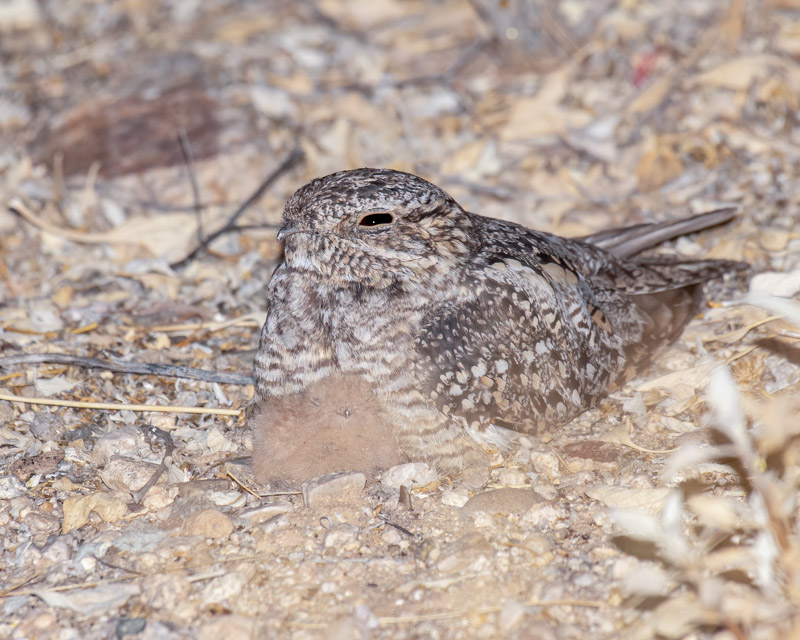
We knew the chick was three of four days old because when the mother moved, the chick ran after it with its wings out from its sides. Chicks can’t do that until at least Day Three. By this time the father Lesser Nighthawk had made two flights over this pair in the preceding minutes and had flown off into the darkening sky. And as it got even darker, the chick recognized that it was getting hungry. It was very active and it nuzzled its mother a bit.
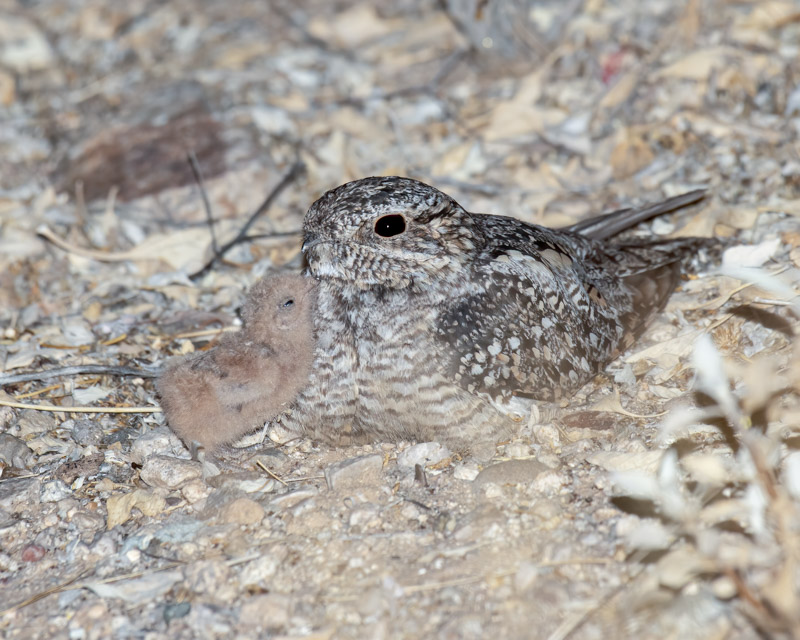
Then it grabbed its mothers beak as if to say “Feed me! Feed me!” Mom got the message and shortly flew off. In this photo you can also see the chick’s ear. Soon that will be covered by feathers and no longer visible.
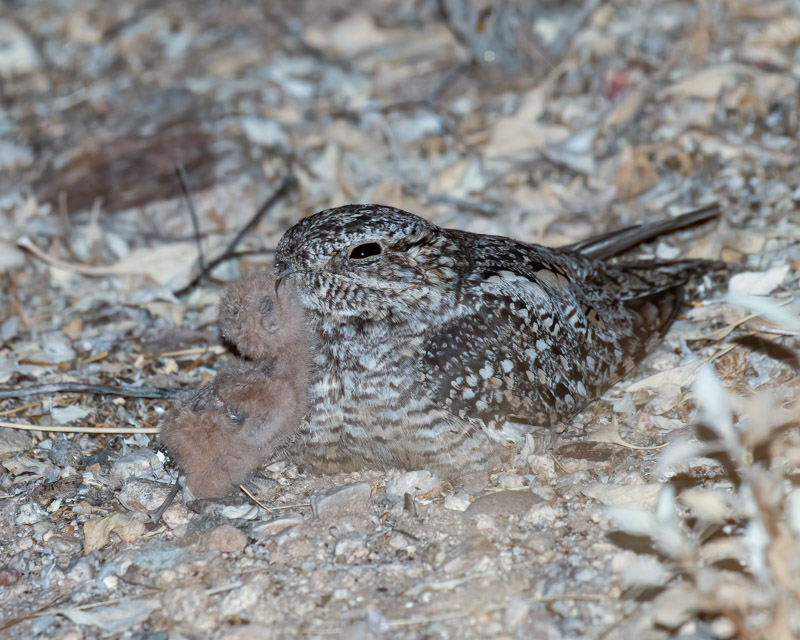
I returned four days later. The chick was now seven or eight days old. You can see that it has already developed wing feathers. Still, during the daytime, it spent much time under its mother. The sun was low in the sky at this time. All of the following photos were taken within 45 minutes time.
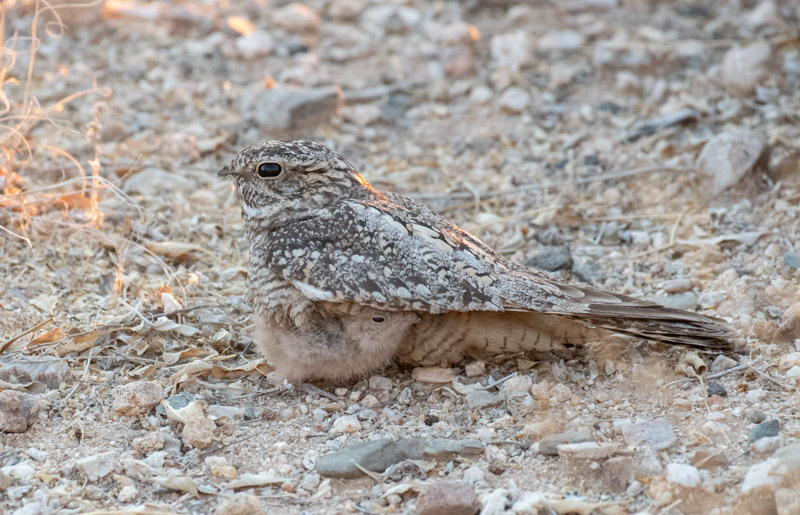
The chick seemed to be active. Mom, too, moved around at this point in the day, probably in anticipation of the night’s activity. The chick’s ear is still very visible.
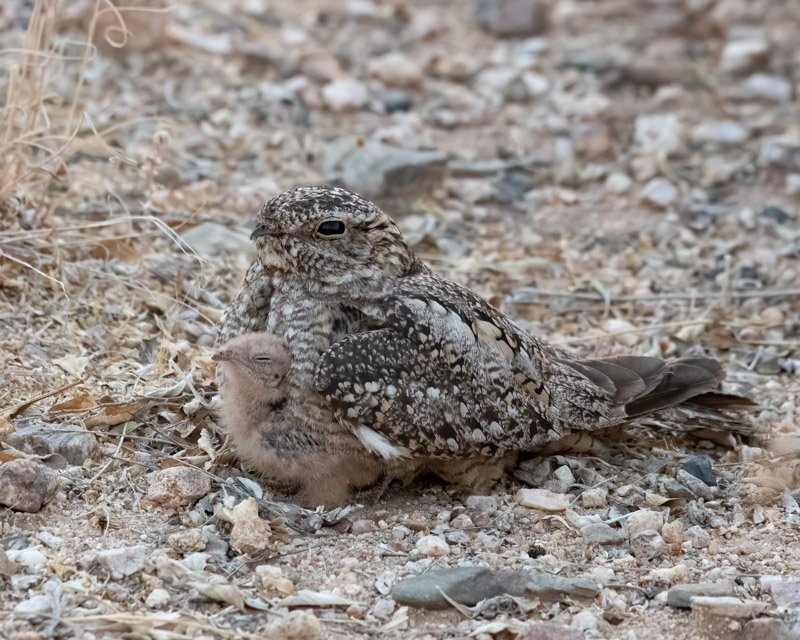
At times when the mother Lesser Nighthawk wandered the chick would remain on its own. Soon though it ran after its mom.
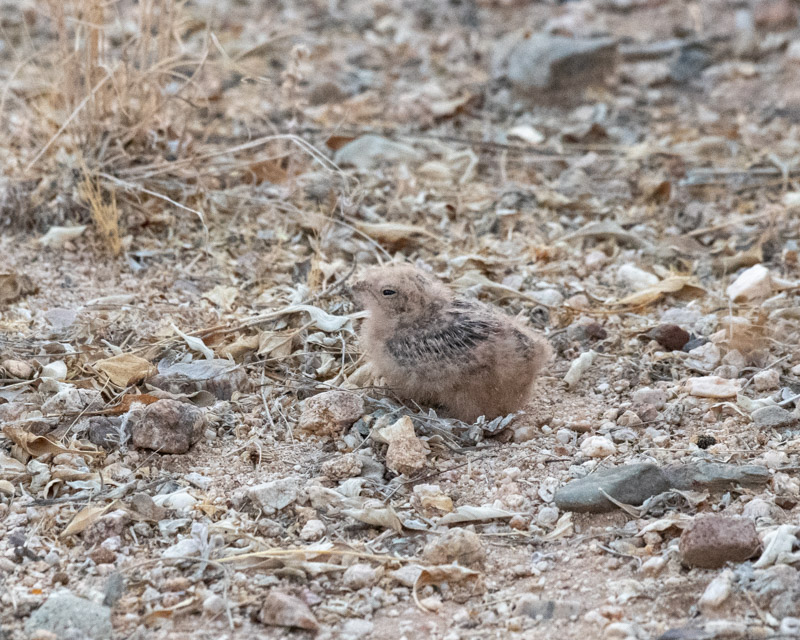
It no longer was automatically pushing under its mother though.
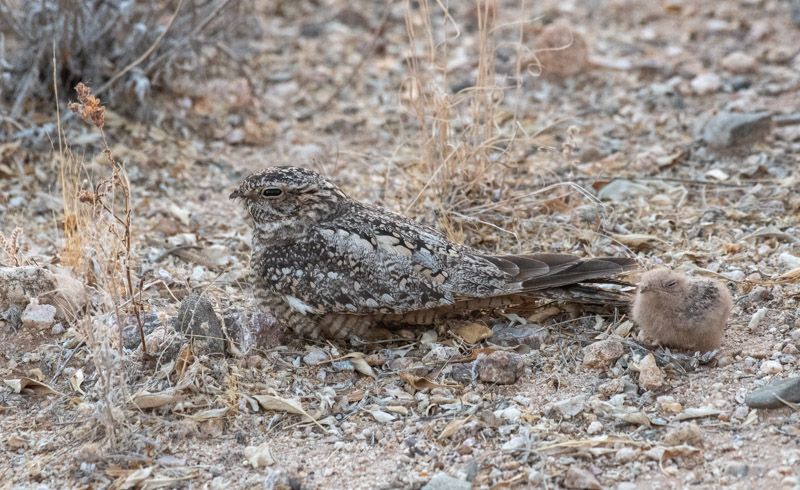
Now mom is wide awake.
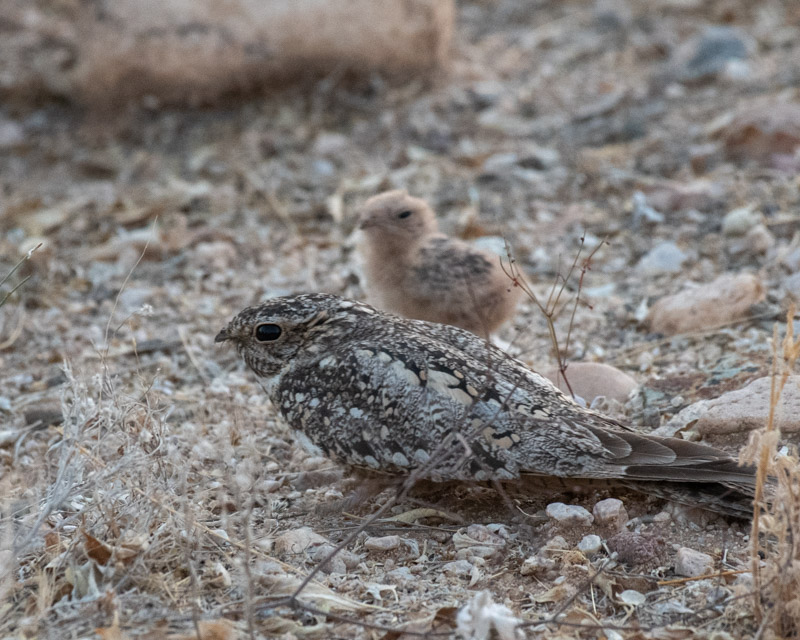
Mom moved to what turned out to be her final spot of the day. The chick cuddled under for one last time.
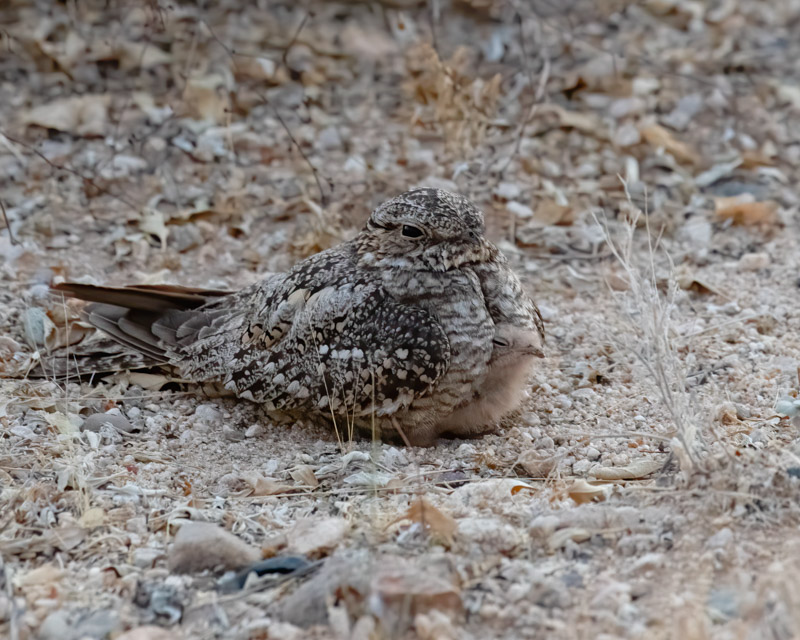
And then, the chick remembered it was hungry. Time to come out and let mom know.
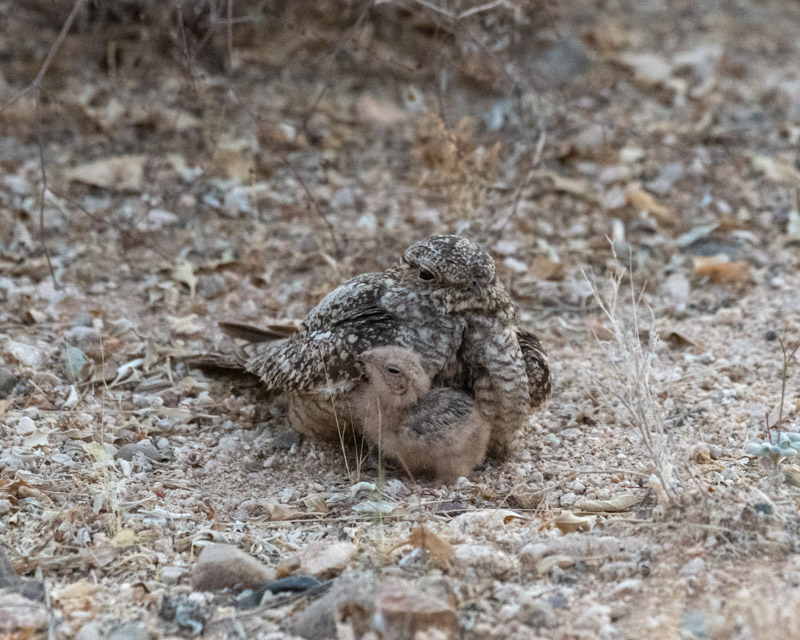
Yep, there’s that beak bite. Baby is hungry and mom needs to join dad in the sky finding insects for the little one. Just seconds after this shot was taken, the mom abruptly took off and disappeared into the night.
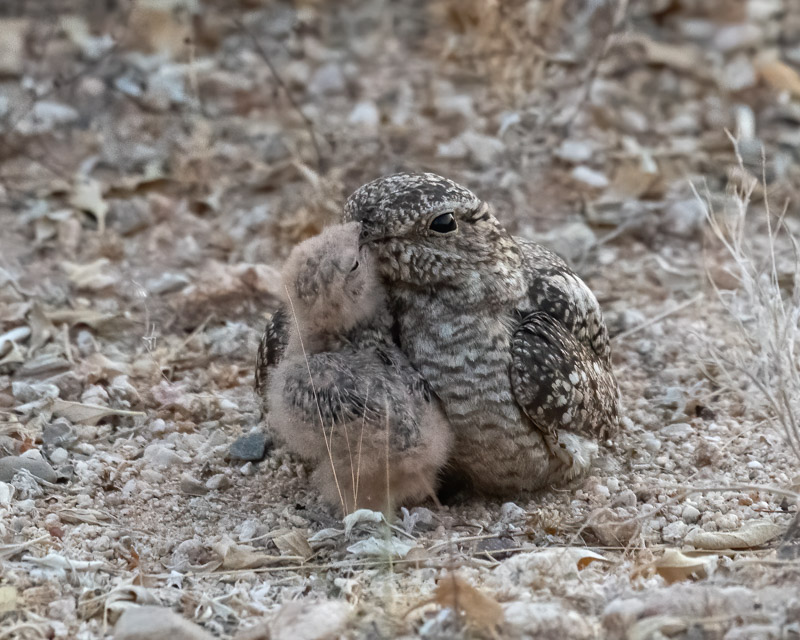
I hope to be able to observe these birds a few more times before the chick begins flying. That happens about three weeks after hatching, so I have another week and a half. Because the birds move around during the day, it is always tough to locate them again each day. And as the days go by, they wander even further. My friend’s friends are very welcoming so I hope for see the birds every few days. Wish me luck!
